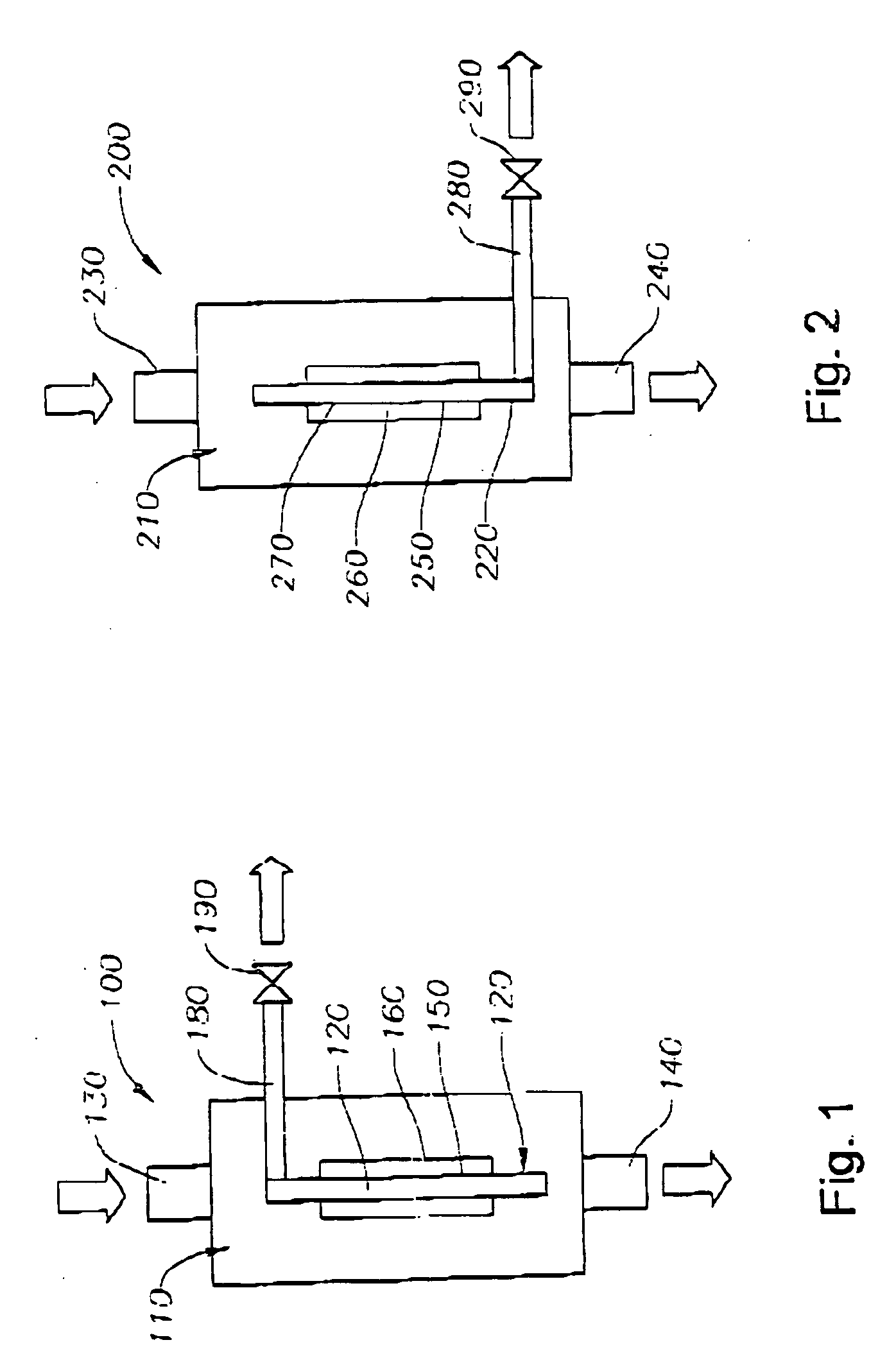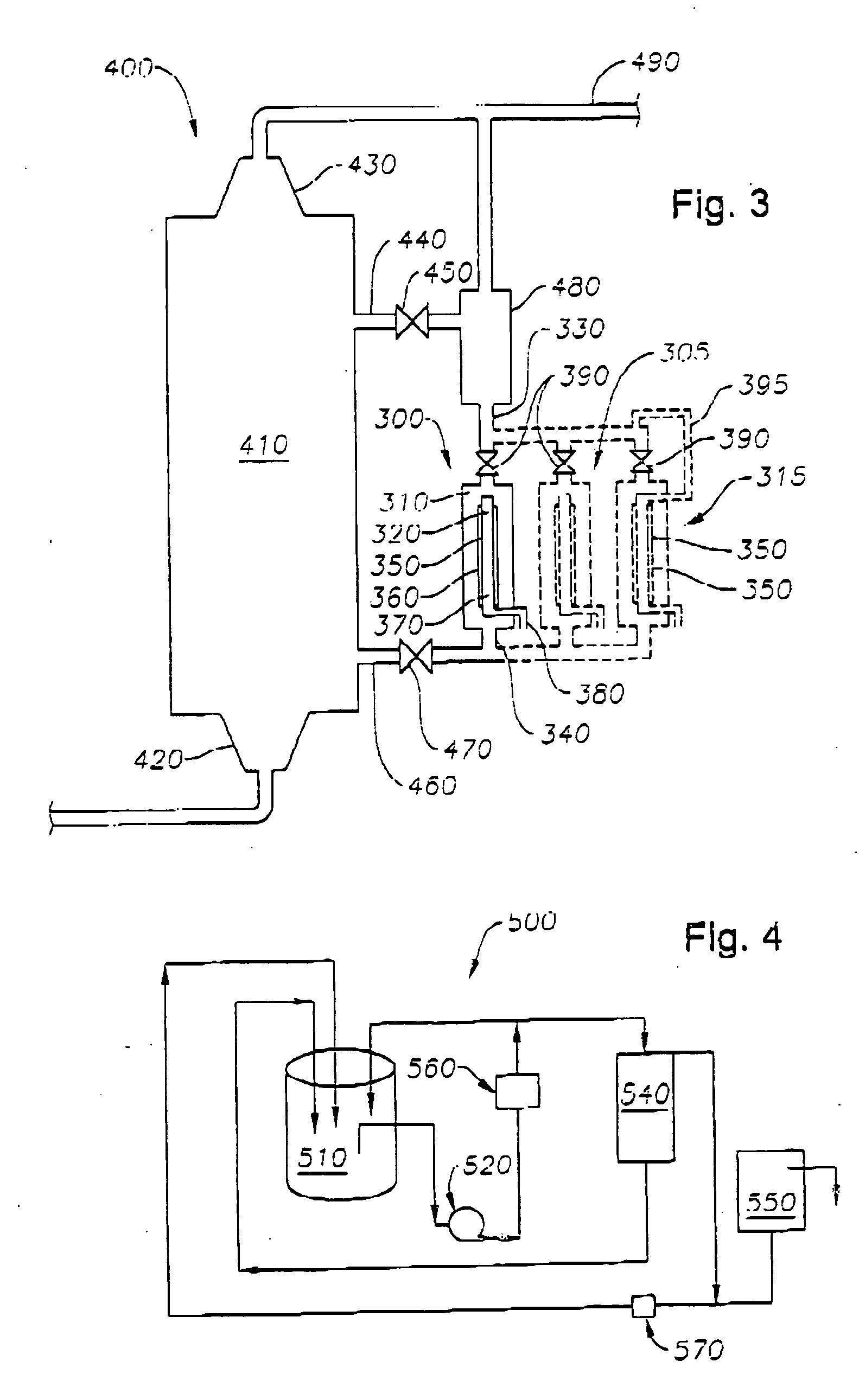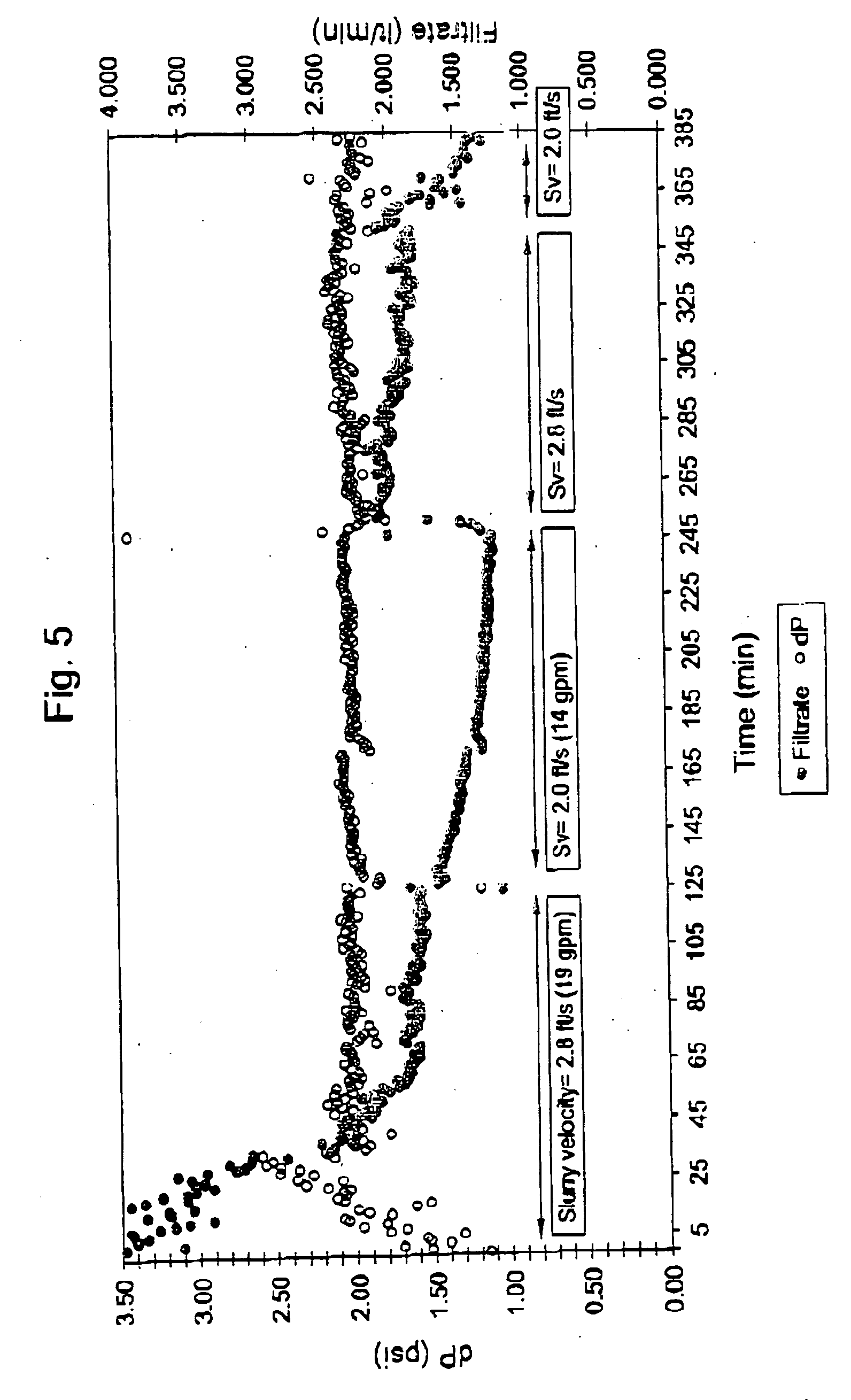Solid/liquid separation system for multiphase converters
a multi-phase converter and solid/liquid separation technology, which is applied in the direction of filtration separation, separation process, moving filter element filter, etc., can solve the problems of reducing the efficiency of the separation system, the most difficult separation task, and the catalytic wax must be separated
- Summary
- Abstract
- Description
- Claims
- Application Information
AI Technical Summary
Benefits of technology
Problems solved by technology
Method used
Image
Examples
example 1
In FIG. 5, the slurry flow in the filter housing for this particular example was cycled at two different rates: 19 and 14 gallons per minute (gpm), which is equivalent to a slurry linear velocity in the filter housing about of 2.8 and 2 ft / s respectively. The pressure differential across the filter medium was kept approximately constant at 2 psi by modifying the filtrate flow rate. FIG. 5 shows the effect of the slurry velocity on the filtrate flow across the filter medium. Different slurry velocities typically form cakes of different thickness around the substrate at the same pressure differential across the filter medium; therefore these different cakes exhibit different characteristics like thickness and permeability, which lead to different filtrate flows across the filter medium.
Thus, in the example of FIG. 5 for instance, the filtrate flow rate had a tendency to stabilize between 1.75 to 2.00 L / min (0.46-0.53 gpm) at a slurry velocity in the housing of 2.8 ft / s; and at a sl...
example 2
In a similar experiment to Example 1, the slurry flow in the filter housing for this particular example was cycled at two different rates: 8 and 14 gallons per minute (gpm), which is equivalent to a linear velocity in the filter housing of 1.2 and 2.0 ft / s respectively. The pressure differential across the filter medium was kept approximately constant at 3 psi by modifying the filtrate flow rate. Similarly to FIG. 5, FIG. 6 shows the effect of the slurry velocity on the filtrate flow across the filter medium. For instance, in this example, the filtrate flow rate stabilized around 0.8 to 1.2 L / min at a slurry velocity of 1.2 ft / s, and stabilized between 1.2 to 1.5 L / min at a slurry velocity of 2.0 ft / s. Therefore, it can be seen that the filtrate flow rate is dependent on the slurry velocity, which indicates that the cake thickness can be controlled by regulating the linear velocity of the slurry across the cake.
example 3
A further series of experiments were conducted in the same manner as described in Example 1 using different substrates such as sintered woven wire-mesh (substrates A and B) and sintered powder metal membrane (substrate C), all of different manufactures. The filtrate flow rate (L / min) using a pressure differential of 2 psi and a slurry velocity of 2.8 ft / s (slurry flow rate of 19 gpm) during a 60-minute period for each substrate are reported in Table 1 as well as breakthrough of solid content observed in the filtrate at the onset of cake formation. All three substrates tested exhibited similar overall behavior proving that the filtrate flux in this invention is basically independent of the technology of forming the substrate. The filtrate quality was measured during the experiments showing very good performance. The amount of solids in the filtrate was most of the time below 50 ppm by weight, more typically less than 15 ppm by weight of solid, and often less than 10 ppm by weight, e...
PUM
| Property | Measurement | Unit |
|---|---|---|
| weight percent | aaaaa | aaaaa |
| number average particle size | aaaaa | aaaaa |
| number average particle size | aaaaa | aaaaa |
Abstract
Description
Claims
Application Information
 Login to View More
Login to View More - R&D
- Intellectual Property
- Life Sciences
- Materials
- Tech Scout
- Unparalleled Data Quality
- Higher Quality Content
- 60% Fewer Hallucinations
Browse by: Latest US Patents, China's latest patents, Technical Efficacy Thesaurus, Application Domain, Technology Topic, Popular Technical Reports.
© 2025 PatSnap. All rights reserved.Legal|Privacy policy|Modern Slavery Act Transparency Statement|Sitemap|About US| Contact US: help@patsnap.com



